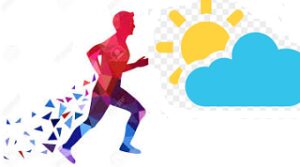
Being and action
Being is not inactivity, because it is being that determines its action, but the pure project on action empties being, it is activism or “vita activa”, the one that Husserl, Heidegger, Hannah Arendt, and more recently Byung Chul Han question about the absence of vita contemplativa, the interior.
but the pure project on action empties being, it is activism or “vita activa”, the one that Husserl, Heidegger, Hannah Arendt, and more recently Byung Chul Han question about the absence of vita contemplativa, the interior.
It is not about subjectivity, because it is precisely the separation between objective and subjective being that is the first great impulse for the emptying of being, it is not also about the social being, it is what is projected in man’s consciousness, in the intention that it directs to the object, to the external life.
The “vita activa” (life in action) was thus expressed by Hanna Arendt: “The expression vita activa, comprising all human activities and defined from the point of view of the absolute stillness of contemplation, therefore corresponds more to the Greek askholia (occupation, restlessness) with which Aristotle [defines] all activity, which the bio politikos of the Greeks. The expression vita activa is permeated and overloaded with tradition. It is as old as our tradition of political thought, but no older than it. The expression itself, which in medieval philosophy is the consecrated translation of Aristotle’s bios politikos, already occurs in Augustine where, as vita negotiosa or actuosa, it still reflects its original meaning: a life dedicated to public and political affairs” (Arendt, 2007, p.23), in this explanation by Arendt there is also a complete translation of the political animal.
What action is for Arendt, is not that of activism or voluntarism, but that which takes place “between” men, depends on intersubjectivity (the relationship of interiorities), which she says thus: “the end, the last of the elements of vita activa addressed by Arendt is action. Action is the element of interpersonality and the environment of intersubjectivity, that is, it occurs between men. Therefore, because it is developed between people, the action is observed in a prominent way from labor and work, such elements do not influence it.
So what considers the human condition of action is plurality, he says textually: “Considering that action is an activity of free men in the public sphere, it is an expression of human plurality. Its realization depends on the coexistence between different individuals. However, since action requires an interactive diversity, it particularizes men. It promotes the appearance of individualities and enables the construction of identities. Now, man will never be able to manifest his uniqueness in isolation. Nobody shows what it is in the personal sphere of intimacy. Only when he is with others can man reveal what he is” (ARENDT, 2007, p.189).
But Hannah Arendt considers modernity in crisis only from the beginning of totalitarianism and the events of the two world wars, and in our view the problem already arises in rationalist/idealist thinking.
ARENDT, Hannah. (2007) A condição Humana. (The Human Condition). 10th ed. Rio de Janeiro: ed. Forense Universitária. .









